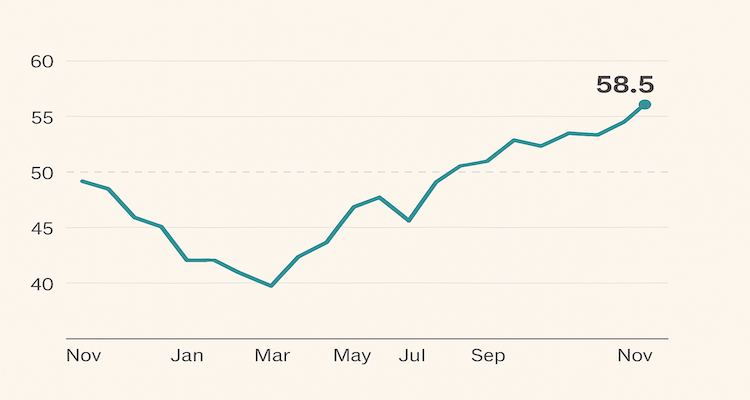AI Regulations: Shaping the Future of Ethical Tech Governance
The article explores the evolving landscape of AI regulations, highlighting keya focus areas like transparency, ethical considerations, and accountability. It discusses global efforts, challenges, and the need for a balanced approach to foster innovation while maintaining public trust. International cooperation and flexible regulatory frameworks will be vital in ensuring AI’s responsible growth.
The Evolving Future of AI Regulations: What to Expect in the Coming Years
As artificial intelligence (AI) continues to reshape industries and societies, the conversation around its regulation has become more pressing. Policymakers, governments, and organizations worldwide are actively seeking ways to balance technological innovation with ethical considerations, safety, and public trust. In the years ahead, the regulatory landscape for AI is expected to become more structured, addressing various challenges associated with its rapid growth.
The Current State of AI Regulation
Currently, the regulatory approach to AI remains fragmented, with different regions adopting varied strategies. Leading the charge, the European Union (EU) has taken significant steps with its proposed AI Act, designed to establish a comprehensive legal framework. This regulation categorizes AI applications based on their risk levels, imposing stricter regulations on high-risk applications to ensure transparency, accountability, and human oversight. Such a structured approach sets a precedent for other regions aiming to regulate AI comprehensively.
On the other side of the Atlantic, AI regulation in the United States has been more decentralized. Individual states and federal agencies have taken the initiative to introduce their own rules. The Federal Trade Commission (FTC) has been particularly active, focusing on issues related to consumer protection and data privacy. Simultaneously, the National Institute of Standards and Technology (NIST) has provided guidelines aimed at promoting trustworthy AI systems, reflecting the diverse regulatory landscape within the U.S.
Key Regulatory Focus Areas for AI
In the coming years, AI regulations are expected to concentrate on several critical areas to address existing and emerging challenges. These focus areas include transparency, ethical considerations, data privacy, accountability, and human oversight.
1. Transparency and Explainability
One of the main concerns surrounding AI systems is the opaque nature of their decision-making processes. Often referred to as the “black box” phenomenon, many AI systems produce outcomes without offering insight into how decisions are made. Future regulations are likely to mandate that AI systems provide clear explanations of their decision-making processes. This requirement will enhance user and regulator understanding, fostering greater trust and accountability in AI-driven systems.
2. Ethical Considerations
AI systems have the potential to reinforce biases present in the data they are trained on, which can lead to discriminatory outcomes. To address this, upcoming regulations will emphasize the importance of fairness, reducing bias, and eliminating discrimination in AI systems. Ethical AI frameworks will be developed to ensure that these technologies are used responsibly, preserving public trust and preventing negative societal impacts.
3. Data Privacy and Security
As AI relies heavily on large datasets, ensuring data privacy and security is paramount. Future regulations will likely impose stricter guidelines on how data is collected, processed, and stored. Robust measures will be required to prevent data breaches and ensure that AI systems adhere to stringent privacy standards, maintaining user trust and protecting personal information.
4. Accountability and Liability
Determining accountability in AI systems, especially in scenarios where autonomous systems operate without human intervention, presents a significant challenge. Future regulations will address these concerns by outlining clear guidelines for accountability and liability. This will ensure that developers, operators, and users of AI systems are held responsible for the outcomes generated, reducing the risk of misuse and promoting responsible AI development.
5. Human Oversight
To prevent the deployment of unethical or unsafe AI applications, regulations will likely require human oversight in critical scenarios. The use of human-in-the-loop (HITL) systems, where human intervention is mandatory for specific decisions, will ensure that AI technologies are used in a manner that aligns with societal values and ethical standards.
The Global Effort for Harmonized AI Regulations
Given the global nature of AI technology, international cooperation will be essential in developing harmonized regulatory frameworks. Organizations such as the Organization for Economic Co-operation and Development (OECD) and the United Nations (UN) are working to establish global standards for AI ethics and governance. These efforts aim to ensure that AI development is aligned with universal values and principles, promoting responsible innovation worldwide.
However, achieving global consensus on AI regulation will not be without challenges. Different countries have varying priorities and approaches, making it difficult to develop uniform standards. International cooperation will be key to overcoming these obstacles and creating a cohesive regulatory environment that supports responsible AI innovation.
Challenges and Future Directions for AI Governance
1. Balancing Innovation and Regulation
One of the most significant challenges in AI regulation is finding the right balance between fostering innovation and ensuring safety, ethics, and accountability. Overly restrictive regulations could hinder the development of new technologies, while too lenient an approach could lead to misuse and erode public trust. Striking the right balance will be essential for promoting sustainable AI growth without compromising on ethical standards.
2. Adapting to Rapid Technological Changes
AI technologies are evolving at an unprecedented pace, making it challenging for regulatory frameworks to keep up. Policymakers will need to ensure that regulations are flexible enough to adapt to these rapid advancements. Continuous monitoring and regular updates to the regulatory framework will be necessary to address emerging challenges and keep pace with technological progress.
3. Enhancing Public Awareness and Engagement
Public awareness and engagement will play a crucial role in shaping AI regulations that reflect societal values. Engaging the public in discussions about AI’s impact through awareness campaigns, consultations, and open forums will help build trust and ensure that regulations are designed to meet the concerns and expectations of society.
Shaping the Future: Creating a Responsible Path for AI
AI regulation is set to evolve in diverse ways, tackling various ethical, legal, and technical challenges. As AI becomes more deeply integrated into various sectors, robust regulatory frameworks will be essential to ensure that its development and deployment are aligned with societal values and public trust.
Efforts to create balanced, forward-thinking regulations will require collaboration among governments, industry leaders, and international organizations. By fostering a regulatory environment that prioritizes ethics, accountability, and innovation, society can harness the full potential of AI technologies while safeguarding the public’s trust and well-being.
Navigating the complex terrain of AI regulation will not be without its hurdles. The journey to creating robust regulatory frameworks that balance innovation and ethics will require a concerted effort from all stakeholders involved. As AI continues to evolve, staying ahead of potential risks and challenges will be crucial to building a future where technology serves humanity responsibly and ethically.











